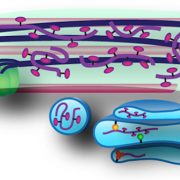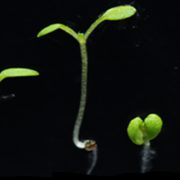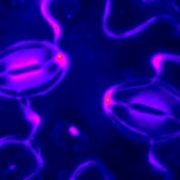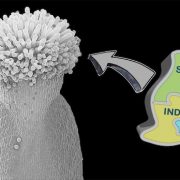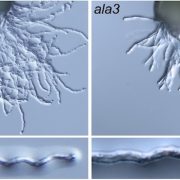Mechanisms underlying transposable element load variation in Arabidopsis
Jiang et al. explore the mechanisms underlying transposable element load variation in the model plant Arabidopsis thaliana.
https://doi.org/10.1093/plcell/koad296
By Juan Jiang (Institute of Botany, Chinese Academy of Sciences) and Ya-Long Guo (Institute of Botany, Chinese Academy of Sciences)
Background: Genetic load refers to accumulated deleterious mutations that could reduce organism fitness. Range expansion promotes adaptation but increases genetic load. Transposable elements (TEs) are a type of repetitive DNA sequence mobilizing across the genome; this mobilization could rapidly produce large-effect mutations. Understanding genetic load and its drivers during range expansion has important implications for human health, crop breeding, and conservation biology. However, the genetic load of TEs during range expansion remains unclear.
Question: How did the genetic load of TEs vary during Arabidopsis (Arabidopsis thaliana) range expansion? What are the driving forces of TE load variation?
Findings: By analyzing the genomes of 1,115 worldwide Arabidopsis accessions, we determined that the deleterious effect of TEs is between that of deleterious missense mutations and loss-of-function mutations. TE load accumulated along the expansion axis, particularly in the recently established Yangtze River basin population. Effective population size explained 62.0% of the variance in TE load. High transposition rates and selective sweeps also contributed to TE accumulation in the expanded populations. In addition, we genetically mapped the candidate causal genes or TEs and revealed the genetic architecture of TE load variation among natural populations.
Next steps: It is important to incorporate multiple genome assemblies or long-read sequencing data to capture the full landscape of TE variation. We must also clarify the relative contribution of each driving force to TE load variation and perform experimental validation of candidate genes or TEs associated with TE load variation in natural populations.
Reference:
Juan Jiang, Yong-Chao Xu, Zhi-Qin Zhang, Jia-Fu Chen, Xiao-Min Niu, Xing-Hui Hou, Xin-Tong Li, Li Wang, Yong Zhang, Song Ge, Ya-Long Guo. (2023). Forces driving transposable element load variation during Arabidopsis range expansion. https://doi.org/10.1093/plcell/koad296



